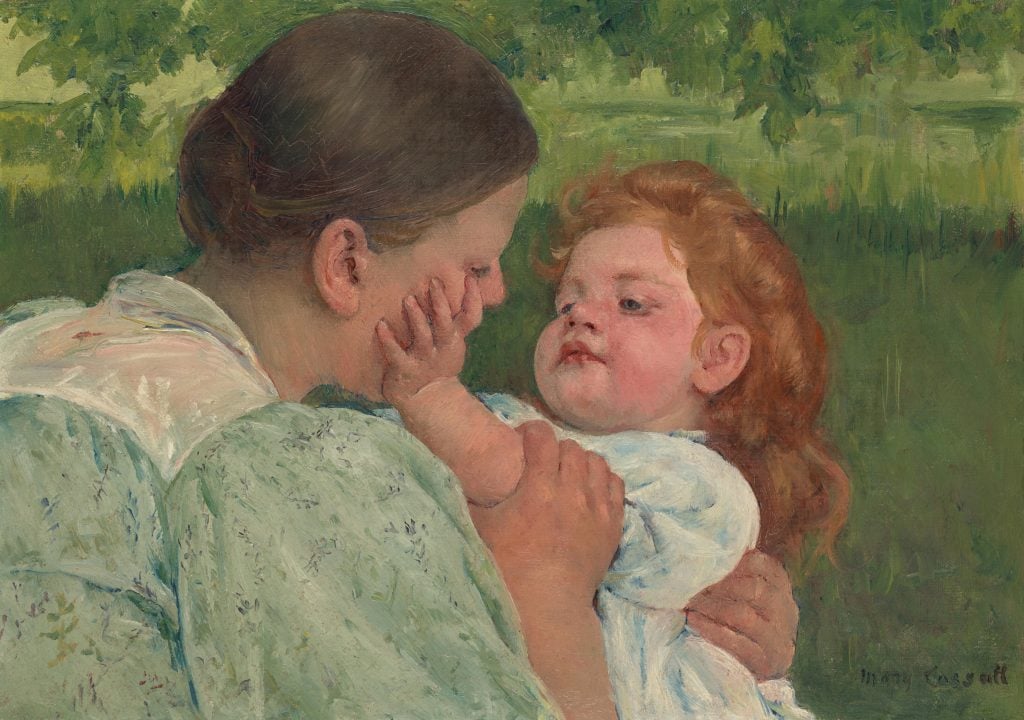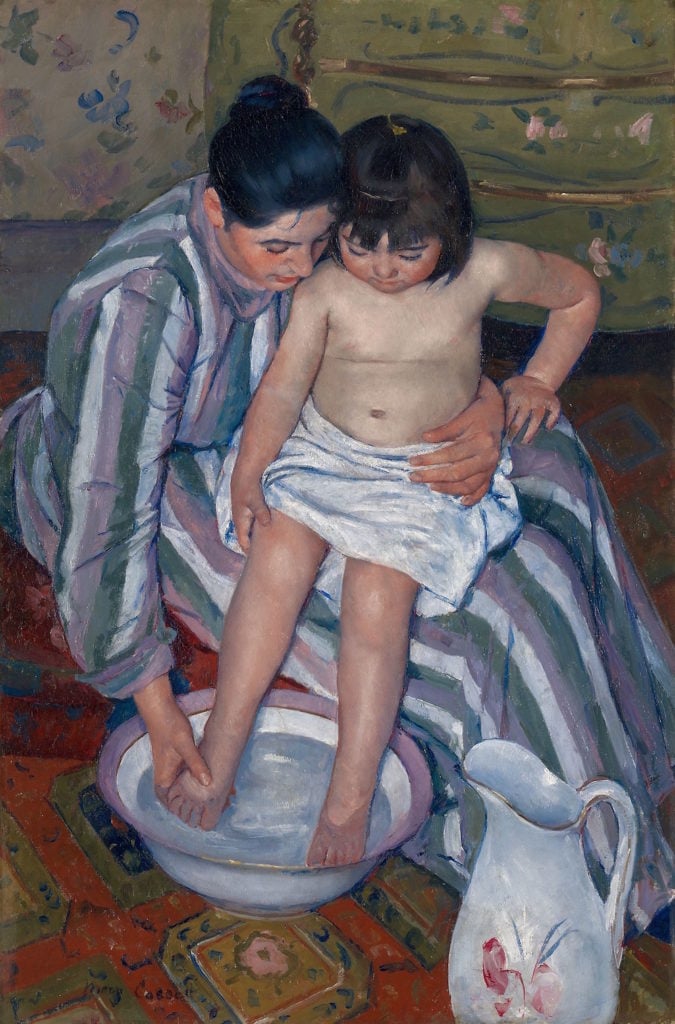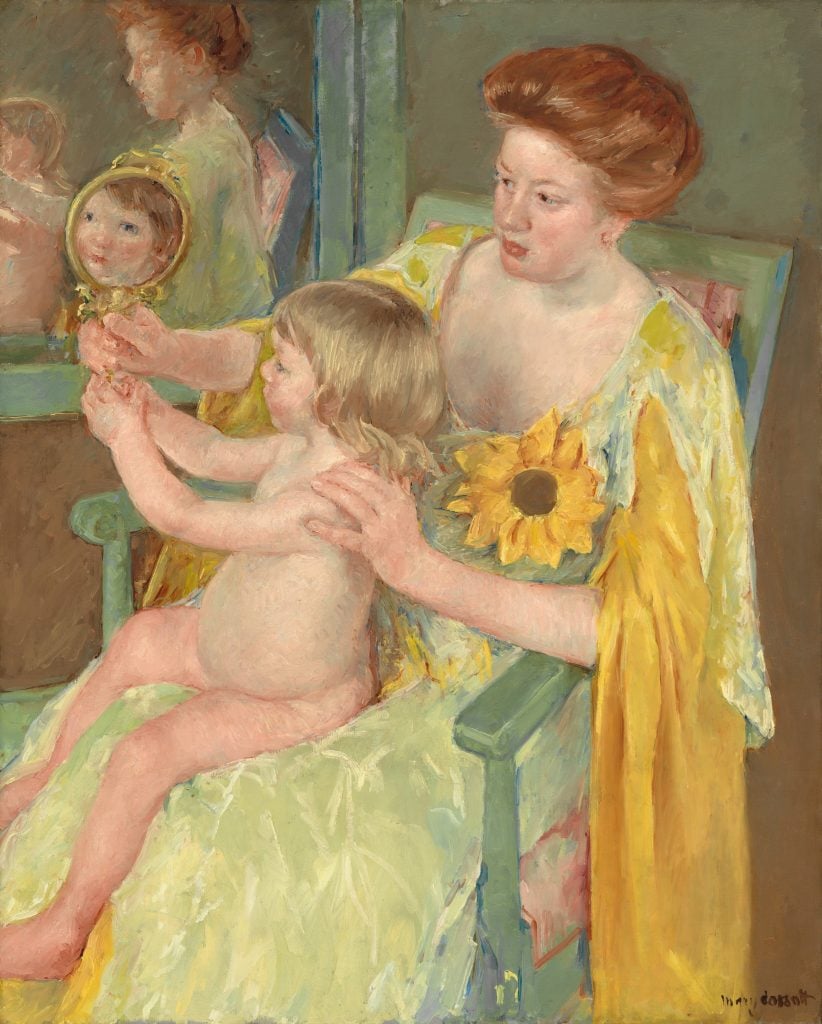Art World
Art Bites: Mary Cassatt, Painter of Mothers, Was Not a Fan of Mother’s Day
Cassatt was a trailblazing painter even if her subject matter was traditional.

The French-American painter Mary Cassatt did not think much of Mother’s Day. She was more concerned with women’s suffrage, an issue she strongly supported and occasionally slipped into her paintings.
At a glance, perhaps this is surprising. Cassatt seems a champion of mothers, her name synonymous with tender and intimate paintings of mothers and their babies. It was this focus that saw her dismissed by 20th-century art historians as sentimental, a painter of nothing more than “tea, clothes, and nursery,” as goes the infamous barb from a 1954 review in Art News by Edgar P. Richardson. The frequent appearance of her paintings on seasonal greeting cards certainly hasn’t helped to undercut this view.
Contemporary scholarship, however, is working to complicate the picture. Begin, if you like, with biography. Born into an old money Philadelphia family, Cassatt’s parents did not approve of her decision to pursue a career in painting and largely insisted she pay her own way—from an early age, she was made to buy her own art supplies. In response, Cassatt worked frenetically to establish her name in an ostensibly male profession. One sacrifice she made was starting a family of her own, which she believed would compromise her career.

Mary Cassatt, The Child’s Bath (1893). Robert A. Waller Fund. Courtesy the Art Institute of Chicago.
Feeling constrained by American social mores, she crossed the Atlantic as a 22-year-old and didn’t look back. Just as she had been barred from enrolling in the École des Beaux-Arts upon arriving in Paris in 1866, so too Cassatt was prohibited from painting the Parisian flâneur who frequented the city’s streets, cafes, and racetracks. (Her predecessor, Rosa Bonheur, had resorted to cross-dressing.) Cassatt didn’t seek out domestic scenes of mother’s child-rearing; rather, she painted what society allowed her to.
This raises a question that endures today: can it be feminist to celebrate traditionally female subjects and jobs, or will only a fierce rejection thereof suffice? In Cassatt’s case, she went further than many of her predecessors by highlighting the female labor that was taking place in the domestic workplace. Works such as Mother Combing Child’s Hair (1879), Mother About to Wash Her Sleepy Child (1880), and The Child’s Bath (1893) are charming and intimate, but they are also about work. Add to this Cassatt’s own professionalism. The women she painted were largely models, which means, in essence, a working artist was painting a working model playing a working mother.

Mary Cassatt, Woman with a Sunflower (1905). Courtesy: National Gallery of Art.
And yet there’s a further complication. Namely, Cassatt’s clientele. In the late 1800s, the femme nouvelle (the “new woman”) emerged in France and promised to shake up the social order. Women now had greater spending power, access to education, and, as of 1884, a right to divorce. Upper-class French women felt threatened by this new version of womanhood, and it was largely for this class that Cassatt painted. All the same, unlike the 20th-century critics, her contemporaries commented on her lack of sentiment and that she painted with bold intensity. “No woman,” her friend Edgar Degas once said, “has a right to draw like that.”
Cassatt’s reflections on Mother’s Day were uncovered by the National Gallery of Art’s curator Kimberly Jones ahead of a 2014 exhibition that explored the relationship between Degas and Cassatt. “As a staunch supporter of woman suffrage,” Jones wrote on the subject, “she thought granting women the right to vote was a far more pressing issue.” Cassatt backed this concern up by raising money for the suffrage campaign, including providing paintings for a 1915 exhibition in New York that donated ticketing and pamphlet fees to the Woman Suffrage Campaign Fund.
If Cassatt had been free to paint what she liked, perhaps there would have been no secular riffs on the Madonna and Child genre. And while Cassatt seemed to rank suffrage above motherhood, at one juncture she joined the two. Woman with a Sunflower (1905) depicts a mother balancing a child on her lap, her breast affixed with a large sunflower, the symbol of the suffrage movement.
What’s the deal with Leonardo’s harpsichord-viola? Why were Impressionists obsessed with the color purple? Art Bites brings you a surprising fact, lesser-known anecdote, or curious event from art history.





